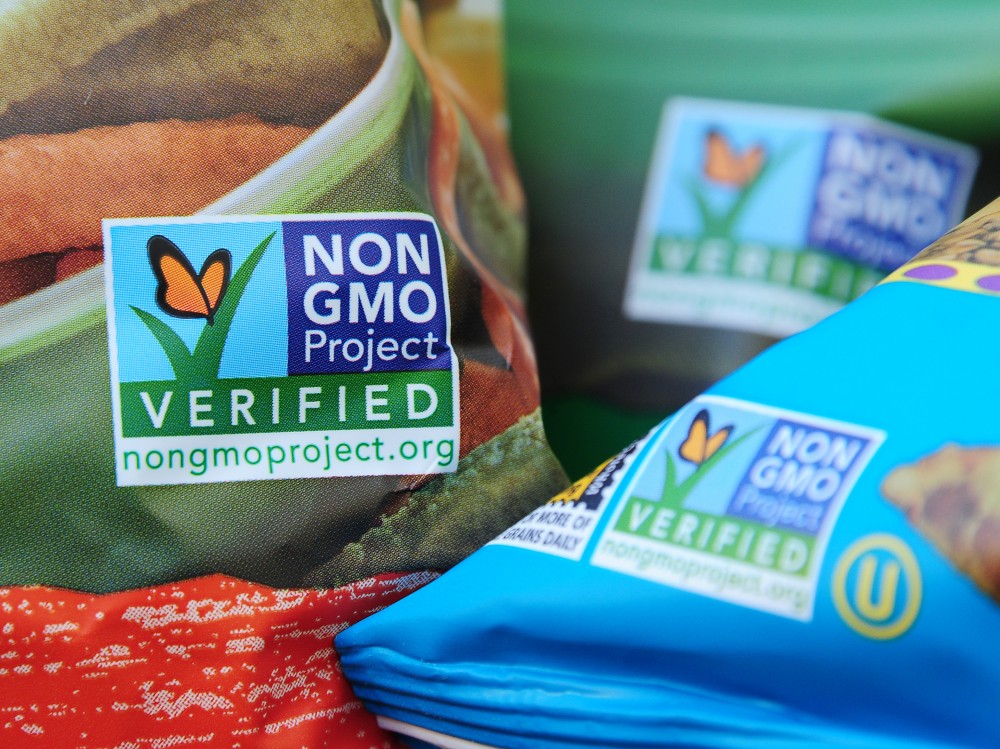Sales of food labeled as non-GMO ballooned to over $3 billion in 2013, according to The Wall Street Journal.
"Interestingly, with all of this traction in the natural sector," Westgate says, "we're increasingly seeing more conventional companies coming on board and having their products verified."
But how does a company get into the non-GMO game? They might call FoodChain ID, a company in Fairfield, Iowa, that can shepherd a firm through the process. It's one of the third-party auditors that certifies products for the Non-GMO Project.
"We start looking at ingredients, and we identify what are all the ingredients," says David Carter, FoodChain ID's general manager. "And of course, the label itself doesn't always identify all of those. So we need to be sure that we have a list of all the processing aids, the carriers and all the inputs that go into a product."
Next, FoodChain ID figures out where each ingredient and input came from. If there's honey in cookies, for example, the company will have to show that the bees that make the honey aren't feeding near genetically modified corn. When there's even the smallest risk that an ingredient could contain a modified gene, DNA testing is in order.
FoodChain ID has a lab where a machine can extract the DNA from ingredient samples in order to analyze it. If that test finds no evidence of GMOs, the ingredient can go in the cookies. Carter says he can barely keep up with the number of inquiries coming in from companies that want certification.
"The demand is now very, very high, and it has been for probably over a year in particular," Carter says.
To date, FoodChain ID says it has verified 17,000 ingredients from 10,000 suppliers in 96 countries.
It may take hundreds of dollars for some products to get a non-GMO label, depending on how many ingredients are already verified as being GMO-free and how many are not.
But even with the rising demand, non-GMO products make up a small fraction of the marketplace. More than 90 percent of corn and soybeans grown in the U.S. contains genetically modified traits. And those two crops are ubiquitous in processed foods like packaged cookies. Still, if the current trend continues, it seems likely that more farmers will consider planting non-GMO crops.
Various companies sell non-GMO seeds, but they can be more difficult to find. Plant breeder Alix Paez hopes his central Iowa seed company, Genetic Enterprises International, can help fill that market niche.
"We are a very small company," Paez says "so our strategy is to find niche markets for farmers that are looking for non-GMO products."
Farmers pay a premium for seeds that are genetically modified to withstand pests, or engineered to tolerate popular herbicides, making it easier for farmers to use those chemicals to kill weeds. Paez and his wife, Mary Jane, hope to develop seeds than can achieve the same yields without those expensive, patented traits. This past season, they grew test plots on a farm in Boone County, Iowa, which they harvested this fall with an ancient red Massey Ferguson combine.
Paez studies the effectiveness of each hybrid seed variety. It's slow and meticulous work. But the careful data collection is key to determining whether a new, non-GMO hybrid can be competitive in the marketplace.
"One of the main things is yield," Paez says. "Stand-ability, consistent performance, disease tolerance — things like that."
If these seeds make the grade, farmers could potentially save some money. And their grain might fetch a premium, especially as demand for non-GMO animal feed grows. Because the only way to end up with non-GMO certified meat is to raise animals on non-GMO feed.
Amy Mayer is a reporter based at Iowa Public Radio in Ames, Iowa. This story comes to us from Harvest Public Media, a reporting collaboration focusing on agriculture. A version of this post originally ran on the Harvest website.
Copyright 2015 Iowa Public Radio.
